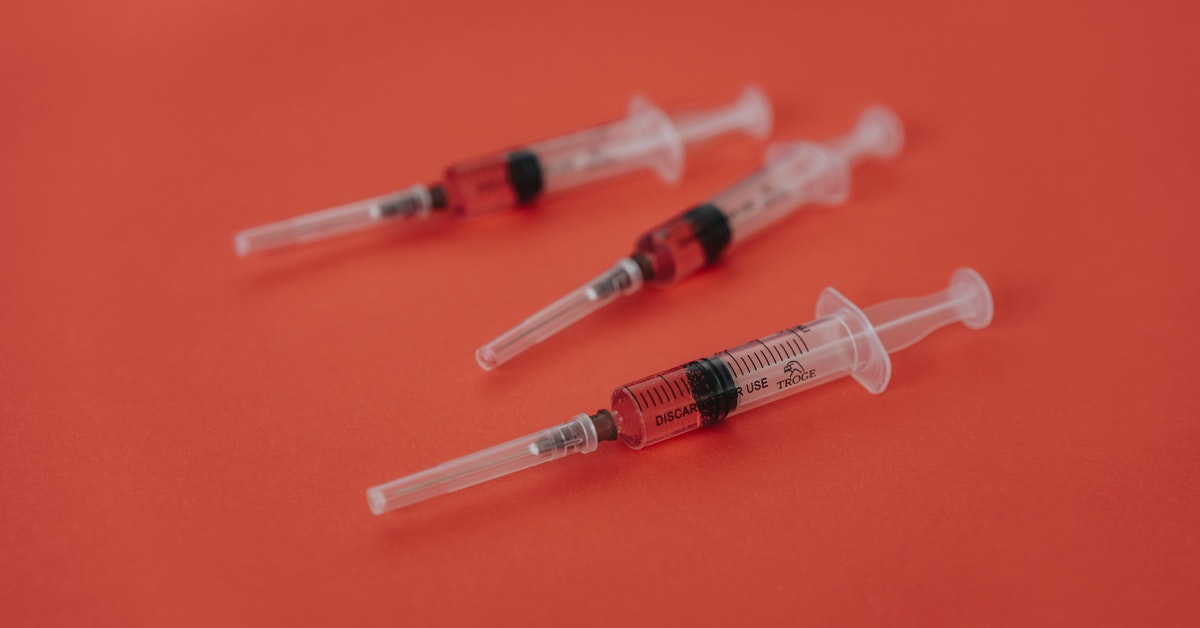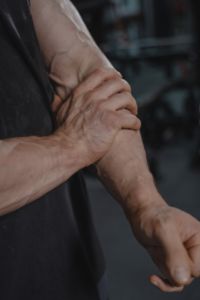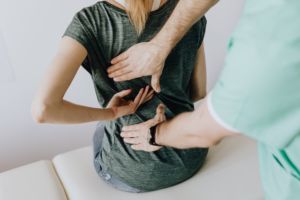
Platelet-rich plasma injections (PRP) are a natural solution to healing stubborn injuries. PRP is among the safest and most effective treatments available for several types of musculoskeletal pain. Sometimes healing is stalled because the injured area isn’t receiving enough blood flow. PRP injections provide the area with the nutrients and healing factors it needs to finish the healing process. PRP can also reduce pain and stiffness in people with chronic conditions like arthritis.
Here are five conditions that PRP can treat.

1. Knee Pain
Knee pain can be caused by an injury or a chronic condition like arthritis. Several studies have been done on the effects of PRP injections on knee pain, and the results are astounding. PRP injections reduce inflammation and pain and increase the range of motion in both injured patients and those with mild to moderate arthritis. In arthritis patients, it can even slow the deterioration of the joint. Patients typically feel better within a few weeks of treatment, and even in arthritic patients, the results last a year or longer before a “booster” shot is needed.
Platelet-rich plasma is made by taking a blood sample from the patient and processing it in a centrifuge to separate the liquid portion of the blood (plasma) from the red blood cells and platelets. The platelets and a small amount of plasma are injected into the injured area. Your provider may use an x-ray or CT scan to help him position the injection within the joint. Platelets are specialized cells that produce growth factors and call other healing related cells to the area. This is what blood flow brings to an injured area naturally, but when blood flow is scarce, there aren’t enough of the specialized cells the body needs to heal completely.
PRP mimics the healing action of blood flow and can jumpstart a stalled healing process. The result is less inflammation and pain and more functional healing.
2. Muscle Injuries
Injuries to the large muscles in the back or weight-bearing areas like the legs can cause pain and disability for weeks or months. PRP injections can speed healing and reduce pain and stiffness.
You’ll need to avoid NSAID and steroid drugs for about two weeks before your treatment. This can be difficult when you are in pain, but you should feel significant relief after your PRP injections. The platelets in PRP need inflammation to “find” the area that needs healing. Since NSAIDs and steroids reduce inflammation, this can make PRP less effective. The treatment itself takes about thirty minutes from start to finish. When treating a large muscle, your provider may inject the plasma in more than one place during your treatment session. You should begin to see results within a few weeks as your body heals.
3. Tendon and Ligament Injuries
Tendons and ligaments are famous for being slow to heal. They are made from tough tissue that doesn’t have much blood supply. The healing factors provided by PRP make up for this lack and help them heal faster and more completely. When your doctor diagnoses your injury as a tendon or ligament sprain, this means that the structure has either stretched or sustained small tears. Examples of these types of injuries include ACL sprains and tears, sprained ankles, sprained wrists, and whiplash.
Tendons and ligaments with larger tears may require surgery. In both cases, PRP injections can help. PRP decreases extra inflammation and encourages healthy healing when used on a fresh injury or surgical site. But what about older injuries that are still causing discomfort? Often injured ligaments and tendons remain weak or tender even after healing. According to recent studies, PRP enhances fibroblast proliferation and collagen production and can strengthen tendons and ligaments that have already healed.

4. Rotator Cuff Injuries
If you struggle to raise your arm above your head, you may have a rotator cuff injury. This type of injury often occurs from repetitive use and is common in people with jobs that require repeated overhead motions of the arms, such as painters and carpenters. Other symptoms include a dull ache in the shoulder that may worsen when you lift your arm.
The rotator cuff is a group of muscles and tendons that keep your upper arm bone in your shoulder socket and facilitate movement. Rotator cuff injuries range from mild enough to manage with rest to severe enough to require surgery.
If rest and physical therapy don’t work, your provider may recommend injections. PRP injections work particularly well on rotator cuff injuries. Studies show that PRP injections can prevent the worsening of symptoms and the need for surgery. It can also be helpful after surgery to improve healing time and outcomes.
5. Back Pain
The back comprises several structures, including soft tissues like muscles, ligaments, and tendons, and spinal structures like vertebrae, joints, and discs. Any of these moving parts can be responsible for back pain. Sometimes injuring one part of the back also causes damage or weakness in other structures. PRP can be used to assist in healing back muscles, ligaments, and pain caused by degenerative discs.
As with most PRP treatments, PRP for back pain is typically most effective when the patient receives 2 to 3 injections a couple of weeks apart. After this treatment plan is completed, patients with chronic conditions like arthritis or degenerating discs experience relief for one to two years before needing a “booster.” Patients with injuries that can heal completely won’t need further treatment.
PRP is often recommended to back pain patients who have “tried everything” or had failed back surgeries. These patients often experience success with PRP and are able to reduce their use of pain medication or prevent surgery.
PRP Injections in Houston
At Vanguard Spine & Sport, we provide comprehensive care for musculoskeletal pain and injury. Our providers are experienced with PRP treatments and have seen the difference it makes in the lives of our patients. Schedule a consultation today to find out if PRP is right for you.




